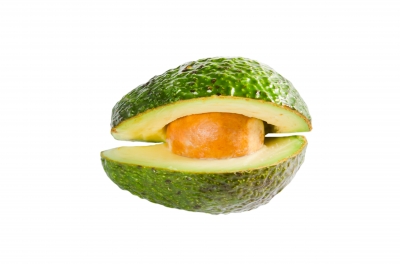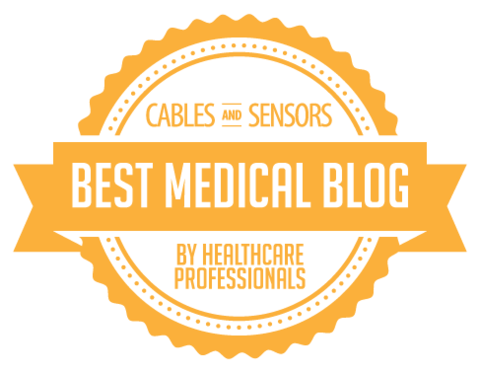A Heart Friendly Starbucks?
I may have some good news for Starbucks lovers.
Normally, the high sugar, high fat, high calorie beverage and menu items offered by Starbucks were reasons to steer clear if you struggle to lower triglycerides, lower cholesterol, or shed extra pounds.
Starbucks is typically not the best place to grab a quick breakfast with a Frappuccinno, while scanning the daily paper.
Simply selecting a Grande Frappuccino and Cranberry Orange Muffin would start your day with a whopping 850 calories and 30 grams of fat!
In the past Starbucks has not embraced the idea of offering more nutritious items. They did remove trans fats and started offering nonfat milk this past year, but there is still plenty of room for improvement.
The good news is Starbucks has decided to revamp their breakfast menu to offer six heart friendly breakfast options. The goal was a menu with fewer calories, more protein, more fiber, and more fruit.
New menu selections include:
Apple bran muffin – 330 calories, 8 grams of fat, 7 grams fiber
Baked berry stella – 280 calories, 9 grams of fat, 6 grams fiber
Power Protein plate with peanut butter – 330 calories, 16 grams fat, 5 grams fiber
Chewy fruit and nut bar – 250 calories, 10 grams fat, 4 grams fiber
Perfect oatmeal – 140 calories, 2.5 grams fat, 4 grams fiber
These new options provide reduced calories and fat grams, while boosting dietary fiber content. All good moves if you are looking to be heart friendly.
You still need to use your head when choosing a beverage. Starbucks is not removing its’ high calorie, fat, and sugar beverage options. One of the best choices is a simple Caffe Americano (15 calories, 0 grams fat).
So, if you enjoy the Starbucks ambiance, you’ll now be able to enjoy a heart healthy breakfast, too. Hopefully, the taste of the new menu items lives up to the flavor of their coffee!
To receive regular heart health and weight loss tips from dietitian Lisa Nelson, subscribe to The Heart of Health ezine.
Brown rice – New whole grain health claim.
I’ve always recommended clients make a switch from white rice to brown rice as a way to boost dietary fiber intake. A diet high in dietary fiber (ideally 25-35 grams/day) is linked with reduced heart disease risk by lowering LDL and total cholesterol levels.
The FDA just approved a new ruling that will allow brown rice to use a health claim on its label. So, when you’re shopping for groceries, be on the look out for the new whole-grain logo added to the brown rice packaging and don’t forget to reach for the brown rice over the white! A 1/2 cup of cooked brown rice contains two grams of fiber.
Brown rice takes extra time to prepare (~45 minutes). I checked out the nutrition label on brown “minute” rice recently and it’s another option, still providing 2 grams of dietary fiber per 1/2 cup serving. Best of all, only takes ~10 minutes to prepare. Haven’t tried it yet, so can’t vouch for its flavor, but I have added it to my shopping list.
All the best,
Lisa Nelson, RD, LN
The Heart of Health
Start "slimming down" your recipes to cut calories and lose weight!
Here are a few simple substitutions:
Replace whole eggs with egg substitutes or egg whites.
Replace butter, oil, and margarine in sweet baked goods with fruit puree or applesauce.
Replace ground beef with ground turkey.
Substitute plain, low-fat yogurt in place of sour cream.
Instead of pastry dough, go with a graham cracker crust.
With a couple substitutions you can enjoy the foods you love without sacrificing your waist!
Receive regular heart health and weight loss tips when you subscribe to The Heart of Health.
All the best,
Lisa Nelson, RD, LN
How to boost dietary fiber intake without elevating uric acid.
Question:
How do you boost fiber intake if you have to watch your uric acid levels?
Answer:
Too much uric acid leads to problems with gout (inflammation/pain in your joints).
Fortunately, a diet that is “gout friendly” will also benefit your blood pressure and cholesterol levels, as well as weight loss efforts.
Here are 4 tips:
- Avoid alcohol or limit intake
- Drink plenty of water (stay hydrated!)
- Maintain an ideal body weight – if you need to lose weight avoid fasting or quick weight loss schemes
- Avoid foods high in purines
Uric acid comes from the breakdown of purines. Purines make up human tissue and they are found in foods. Which is why limiting foods with high in purines content is beneficial.
Foods to limit/avoid – alcohol, anchovies, sardines in oil, herring, organ meat, legumes (dried beans, peas, mushrooms, spinach, asparagus, cauliflower, yeast, meat extracts, and gravies.
Foods that are beneficial to gout treatment include fresh berries, bananas, tomatoes, celery, cabbage, parsley, green-leafy vegetables, pineapple, red bell peppers, tangerines, oranges, potatoes, low fat dairy, whole grain breads and pastas, tuna, salmon, nuts, seeds, and tofu.
In my recent article – High Fiber Diet Plan to Lower Cholesterol and Lose Weight – I recommended legumes as a good high fiber source to increase. If uric acid levels are an issue for you, legumes is not the best source for increasing your fiber intake. Instead, rely on whole grain breads, cereals, and pastas, as well, as fruits and vegetables beneficial to gout treatment that I’ve listed above to get your daily dietary fiber.
All the best,
Lisa Nelson, RD, LN
Use Plant Sterols for Heart Health

One way to improve heart health and lower LDL (bad) cholesterol is to include plant sterols as part of your everyday diet. Plant sterols, also called phytosterols, actively remove cholesterol from the body by blocking cholesterol absorption in the intestine.
Eating 2 grams of plant sterols each day will on average reduce your LDL cholesterol 10%.
Plant sterols occur naturally in foods at low levels, so some foods (such as margarines, mayonnaise, and dairy based drinks) have been fortified. Here are some options you can use to increase your plant sterol intake and promote a healthy heart!
Avocados, 1 small 0.13 grams
Corn Oil, 1 tablespoon 0.13 grams
Sunflower Seeds, 1/4 cup 0.19 grams
Oat Bar with plant sterols, 1 bar 0.4 grams
Orange Juice with plant sterols 1.0 gram
Vegetable oil spread with plant sterols, 1 tablespoon 1.0 gram
Fruit & yogurt flavored minidrink with plant sterols, 3 oz. bottle 2.0 grams
If you like this health tip, subscribe to The Heart of Health to receive bi-weekly heart health and weight loss tips from dietitian Lisa Nelson.
Image courtesy of rakratchada torsap / FreeDigitalPhotos.net
Do I need to be concerned about high HDL levels?
My LDL is 50, my HDL is 160 and my triglycerides 90. Do I need to be concerned about my high HDL levels?
The above question is one I recently answered for a visitor to The Health Central Network. I thought readers of this blog may be interested in the answer as well, so here it is.
HDL is the good cholesterol and does not contribute to arterial plaque that leads to heart disease. HDL actually does the opposite and reduces the plaque lining your artery walls. A high level is a good thing and reduces your heart disease risk. If taking medications, speak with your MD to double check whether your medication is playing a role.
Now, we are learning that there are two different types of HDL molecules and of course one is “good” and the other “bad”. The only way to know which type of HDL you have and your levels is get get an expanded lipid profile. Consult with your MD to learn your options.
All the best,
Lisa Nelson, RD, LN
How to Lower Cholesterol Naturally




